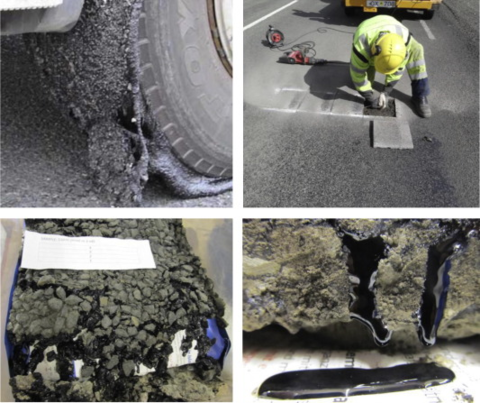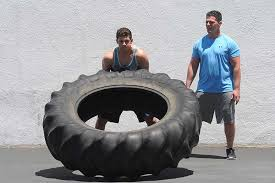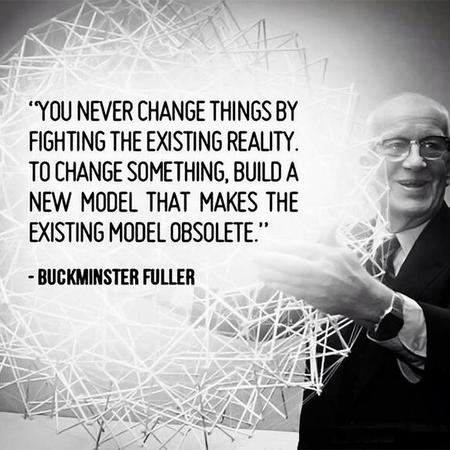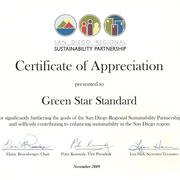Billions Of Tires Reach End Of Life Each Year, How Can They Be Disposed Of In A Sustainable Way?

The transportation sector is typically pegged to account for 23% of global greenhouse gas emissions and is often considered one of the top industries that require addressing to prevent the worst effects of climate change. These considerations are typically only looking at tailpipe emissions that come from fueling cars, trucks, and more. However, the fundamental needs for such transportation isn't just fuel-- it's the wheels that actually perform the movement, and tires specifically require consideration of their level of 'green,' especially regarding how they are handled at the end of their useful lifetimes.
Description Of The Situation
Some studies have found that 1.76 billion tires are manufactured annually, with each only lasting for three to six years before reaching its end of life. The reason that's so problematic is because new rubber tires are made of a material known as carbon black. Carbon black is created using an incomplete combustion of fossil fuels, a process that harms the climate due to the need to extract new fossil fuels and then burn them. Each new tire created thus takes a toll on the environment.
Beyond their creation, issues also arise when it comes time to get rid of these tires after the three to six years. Traditionally, about 15% of tires have found their way to landfills as a disposal method. Not only is this practice wasteful, but it contributes to many of the known environmental and other ills that landfills cause, including:
- Air pollution and atmospheric effects;
- Ground water contamination;
- Public health effects;
- Soil and land pollution;
- Economic costs; and
- Landfill fires.

Photo Source: Recycle Nation
Worse, when landfill space is deemed uneconomical or unavailable, up to 46% of end-of-life tires end up being industrially incinerated. Each passenger tire incinerated releases 22 kilograms of carbon dioxide and each truck tire releases 110 kilograms of carbon dioxide, not to mention the local air pollution and effects on public health.
As more countries around the world industrialize and become as dependent on cars as nations like the United States already have, the glut of tires needing to be dealt with at the end of their useful life is only going to increase. Luckily, green and sustainable solutions have been proposed, researched, and utilized to minimize the harms.
Sustainable Uses For End-Of-Life-Tires
Rather than let used tires sit in landfills for many decades, the following solutions can be considered as greener solutions, though it is worth noting that some of them come with their own environmental considerations.
Shredded Tires For Pavement and Sports Fields
Many companies take used tires and shred them down into small parts that are able to be used for mulching and paving purposes. For example, homeowners can opt to have Eco Paving installed in their driveway, which offers not only a recycled use for end-of-life tires but also offers benefits such as:
- Slip resistance;
- Elimination of weed growth;
- Low maintenance
- Affordability, and more.
Sports fields that use artificial turf also commonly need rubber crumbs or pellets underneath them to providing cushioning, safety, ease of maintenance, and improved performance. Putting used tires into industrial tire shredders has proven quite effective in creating sustainably-sourced rubber crumbs for this purpose.

Source: Conservation Minnesota
Shredded tires can also be used as a mulch material in children's playgrounds, though questions remain unsettled about the ability of these applications to potentially contaminate soil and/or groundwater underneath them, with government agencies like the Environmental Protection Agency and U.S. Consumer Product Safety Commission working to ensure these applications are used in the safest and most environmentally-friendly manner.
Civil Engineering Applications
Similarly, the rubber from used tires can be used in a wide range of civil engineering applications. The Environmental Protection Agency discusses, for example, the ability for scrap tires to be broken down and used as lightweight fill material in applications such as:
- Subgrade fill and embankments;
- Backfill for wall and bridge abutments;
- Subgrade insulation for roads;
- Landfill liners; and
- Septic system drain fields.

Source: Science Direct
The advantage tires have for use in these applications are affordability, availability, flexibility, and resilience. Not only do these uses represent non-incineration end-of-life applications, but they offset the need for the manufacture of those other materials they're replacing.
Converting Back Into Carbon Black For New Use
Recently, innovative companies have realized that pyrolysis and similar processes could be used to process old, scrap tires back into a recovered version of carbon black, the material used to make tires in the first place. This process does emit a small amount of carbon emissions, so it's not perfect, but in creating recycled carbon black it prevents the environmental degradation from other tire disposal methods and eliminates the need to create fresh, new carbon black from the much dirtier fossil fuel extraction and combustion process. In that way, this process makes the lifecycle of a tire much greener.
Development continues on this type of technology to make the quality of the material even greater and the process even more affordable. G3C Technologies, for example, has created a 'Generation 3 technology' (where previously only Generations 1 and 2 existed) that creates high-grade recovered carbon black that can more directly replace the need for new materials in products that demand the highest of qualities (not only tires, but auto parts, plastic parts, and more).

Source: G3C Technologies
Repurposing
On top of all these high-tech and innovative solutions, sometimes the greenest option is the simplest one:
Tires can be recycled and repurposed in a variety of manners. Old tires can be used as a tire swing for children.

Source: Wikicommons
Tires are commonly used as exercise equipment for building strength and agility.

Source: Precision Fitness
Creative eyes can utilize old tires as material for construction or art.

Source: Inhabitat
The only limit to this use for old tires is your own imagination.
For those who are looking to find ways to be more sustainable in your personal life or business, Green Star Standard (GSS) is an organization that strives to enable people and companies to evaluate green products and services. GSS provides certified green comparisons, an internationally-recognized green standard certification process, and more.
To learn more about how GSS can assist you and your organization be more energy efficient and climate conscious, please join our mailing list, check back to this website for regular updates, and reach out to us to learn more.





